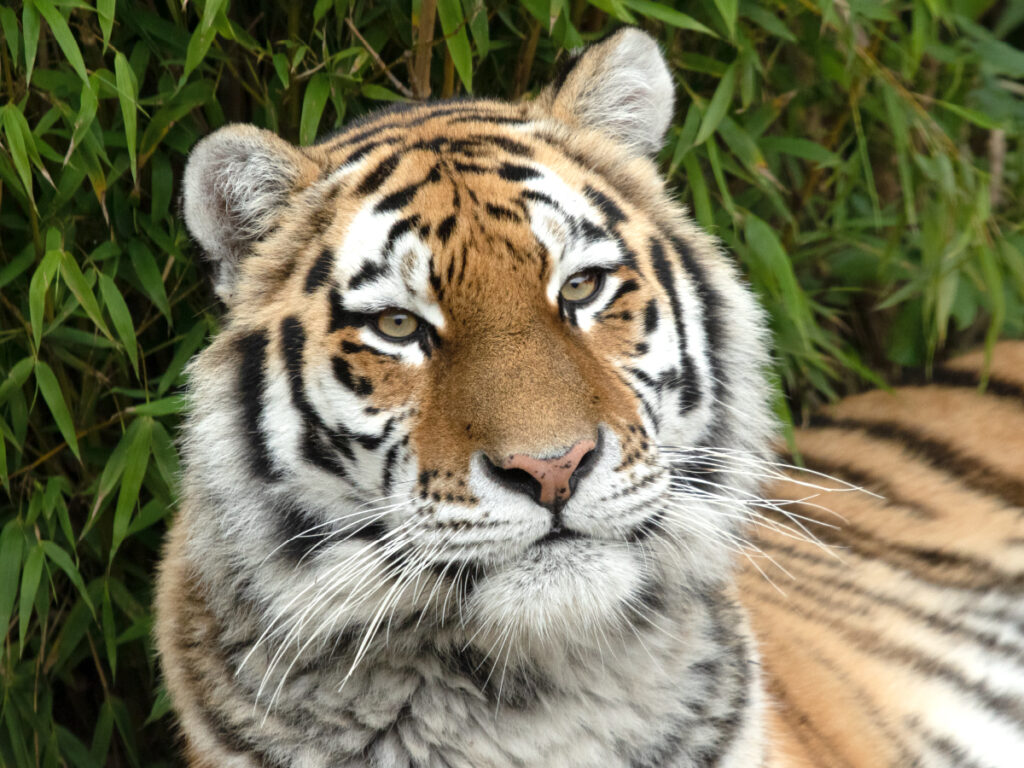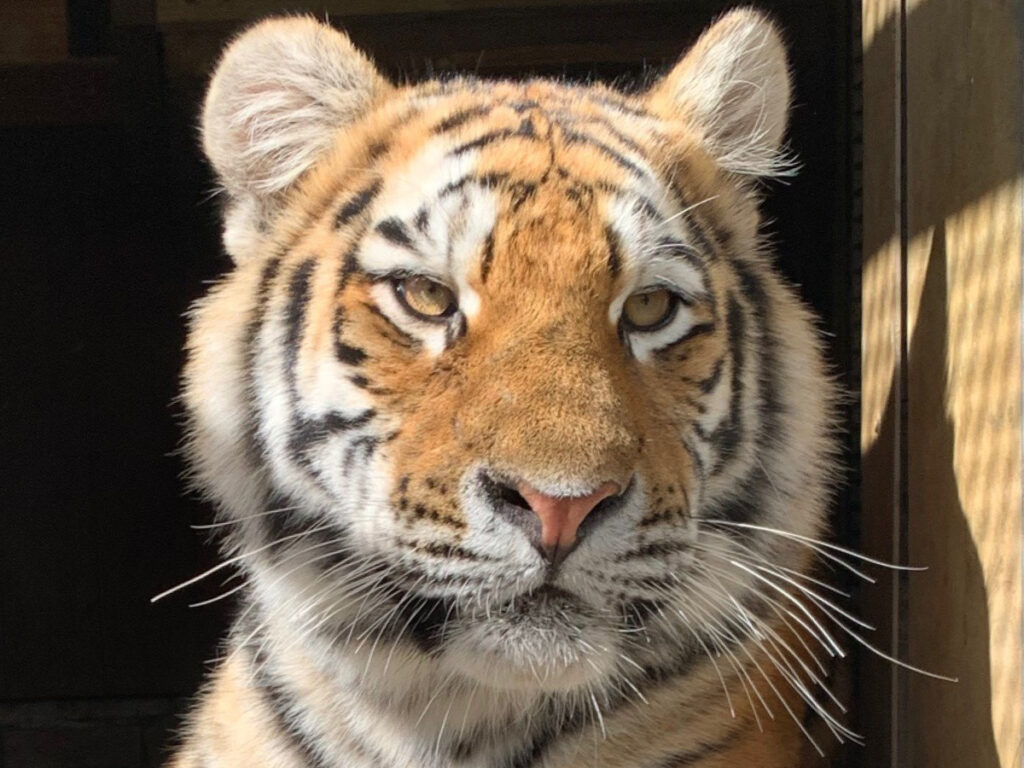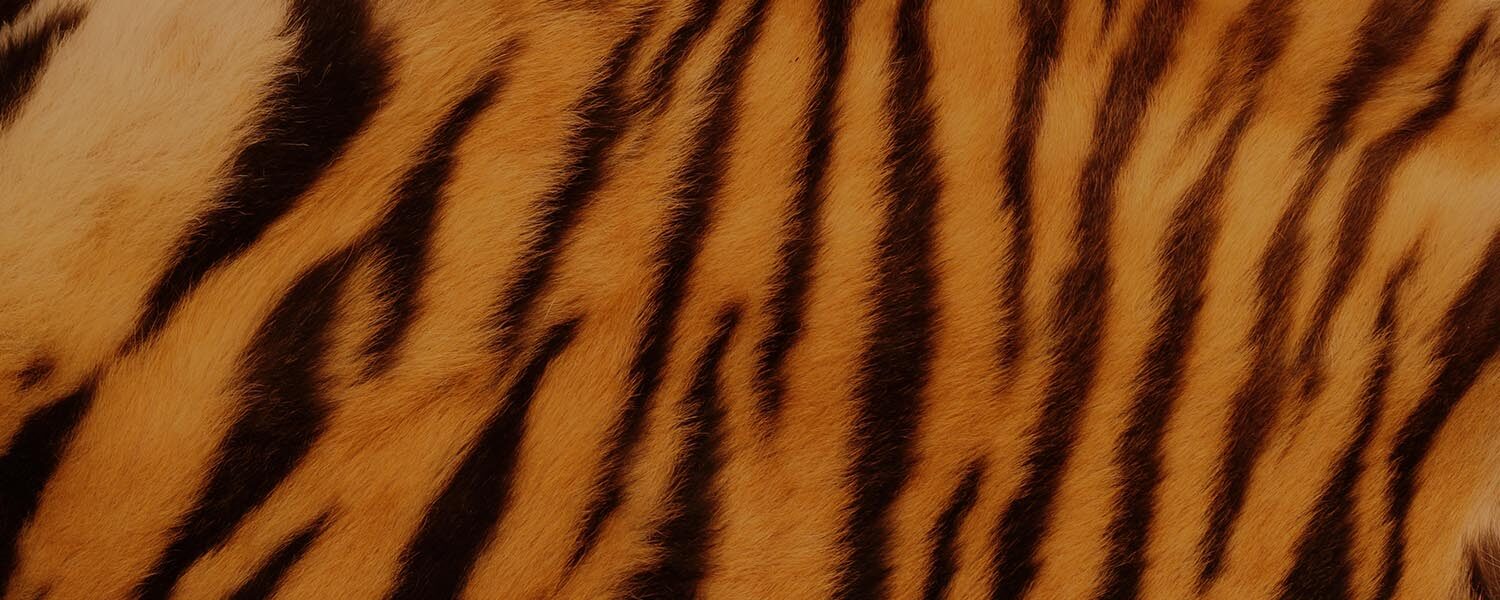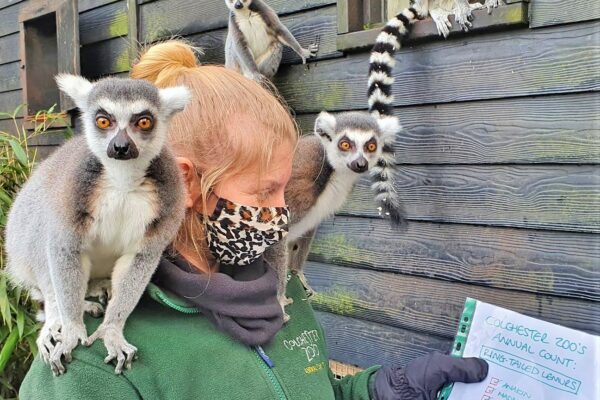Posted May 17, 2024 in News
Amur Tiger Feed
Enrichment is a vital part of our animal care as it helps to ensure that our tigers live in a mentally and physically enriching environment. By hanging their food at the top of the pole, this encourages the tigers to exhibit behaviours they would typically use out in the wild.
Watch a recent Amur tiger pole feed and see the incredible climbing skills of this magnificent species below!
There are nine sub-species of Tigers, three of which are now extinct. The remaining six sub-species are the Bengal, Indo-Chinese, South China, Amur, and Sumatran Tiger.
Here at Colchester Zoo, we are home to two female Amur tigers, Taiga and Tatana.

Taiga is our breeding female, having given birth to three cubs (two male and one female) in 2019, all of which were sired by our previous male, Igor. Taiga prefers food-base smells, such as coffee beans, chilli seeds and gravy granules. Taiga is a very ‘chatty’ cat and enjoys engaging with her Animal Care Team.

Tatana is the daughter of Taiga. Due to her age, she is very playful and enjoys enrichment such as tyres and barrels. She now lives separately to mum, Taiga, as tigers are solitary creatures and cubs would usually leave their mothers at about 18 to 24 months old out in the wild.
Taiga and Tatana are excellent ambassadors for their wild cousins, helping to educate visitors about this incredible species and raise awareness about the current threats they are facing in the wild.
It has been estimated that there are less than 500 Amur tigers left in the wild.
Our charity, Colchester Zoological Society, helps support conservation projects worldwide through the donation of funds. By visiting Colchester Zoo, your ticket will go towards not only providing care for our Amur tigers, but also providing funds to help protect wildlife across the planet.



